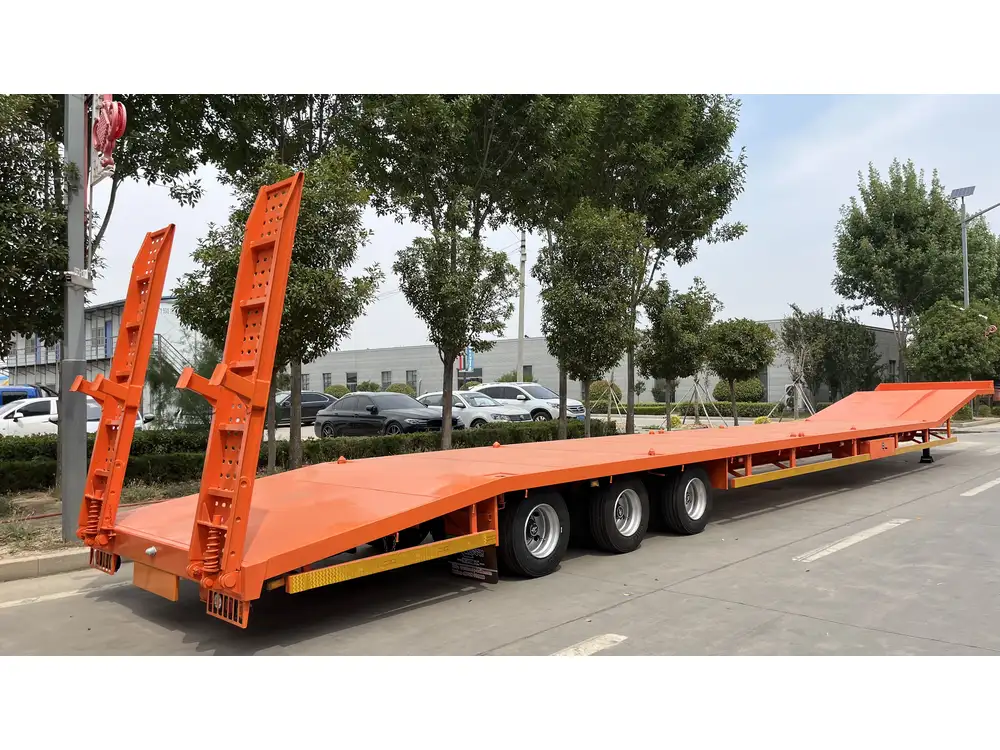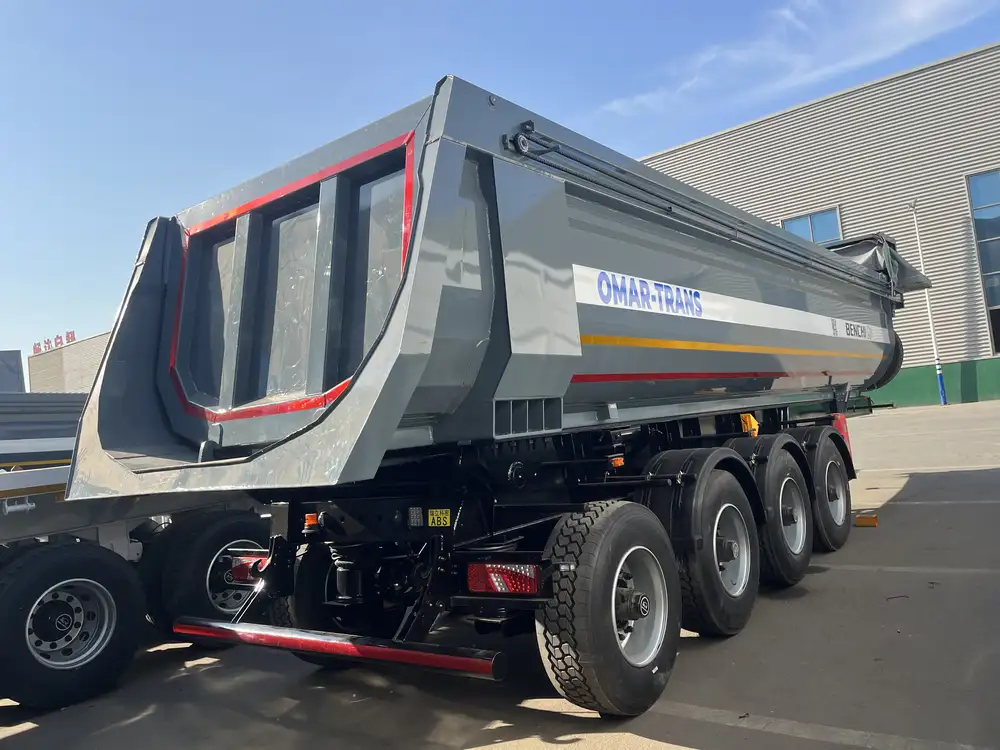When it comes to transporting heavy materials, the capability and specifications of dump trailers are paramount. As manufacturers of semi-trailers, we understand the importance of comprehending load capacities and the various factors that influence how many tons a dump trailer can effectively carry. This comprehensive guide will delve into the intricacies of dump trailer capacities, considering different types, materials, and practical applications.
Table of Contents
- Dump Trailer Basics
- Types of Dump Trailers
- Understanding Load Capacity
- Factors Influencing Capacity
- 4.1 Trailer Size
- 4.2 Construction Material
- 4.3 Suspension Systems
- Common Uses for Dump Trailers
- Calculating Payload Capacity
- Safety Considerations
- Conclusion
Dump Trailer Basics
Dump trailers serve a myriad of functions, often utilized in construction, landscaping, agriculture, and various hauling tasks. Their primary role is to transport bulk materials—such as dirt, gravel, sand, and debris—allowing for efficient and effective unloading at the destination site.
A critical component of any dump trailer is its load capacity, which is typically measured in tons. This refers to the maximum weight the trailer can carry, directly impacting the efficiency and productivity of hauling operations.

Types of Dump Trailers
Understanding the specific type of dump trailer is essential in determining its tonnage capacity. Each variant is designed for particular applications and load specifications.
Standard Dump Trailers
Standard dump trailers are commonly used for general hauling purposes. These trailers usually feature a rectangular shape, are usually fitted with a single or tandem axle, and can carry between 5 to 20 tons depending on the model. They are ideal for transporting materials such as soil, rocks, and construction debris.
Gooseneck Dump Trailers
Gooseneck dump trailers provide excellent maneuverability and stability. By connecting to a tow vehicle using a gooseneck hitch, they allow for greater weight distribution. These trailers can hold around 10 to 25 tons, making them a preferred choice for substantial loads, especially in construction projects.

Lift Axle Dump Trailers
Lift axle dump trailers are designed with an extra axle that can be raised or lowered based on the load. This feature allows them to handle heavier weights safely, typically up to 30 tons or more. They are particularly useful for transporting denser materials, such as asphalt or concrete.
Understanding Load Capacity
Load capacity is a crucial factor that influences the performance of dump trailers. It’s important to differentiate between the gross vehicle weight rating (GVWR) and the net payload capacity:
- Gross Vehicle Weight Rating (GVWR): This represents the maximum allowable total weight of the trailer and its cargo combined.
- Net Payload Capacity: This is the actual weight that can be loaded onto the trailer after accounting for the trailer’s own weight, also known as the curb weight.
A higher GVWR means the trailer can accommodate larger or heavier loads, making it effective for various hauling tasks.
| Type of Dump Trailer | Average Load Capacity (Tons) |
|---|---|
| Standard Dump Trailer | 5 – 20 |
| Gooseneck Dump Trailer | 10 – 25 |
| Lift Axle Dump Trailer | Up to 30 or more |
Factors Influencing Capacity
Several factors significantly influence a dump trailer’s load capacity—awareness of these factors is essential for users choosing the right trailer for specific tasks.

Trailer Size
The overall size of the trailer, including its dimensions and the length of the bed, can affect how many tons it can carry. Larger trailers often have higher capacities but may also require larger towing vehicles.
Construction Material
The material used to construct the trailer impacts its durability and, consequently, its capacity. Common materials include:
- Steel: Known for its strength and longevity, steel trailers often have higher capacity limits than aluminum.
- Aluminum: While lighter and resistant to rust, aluminum trailers typically support lower weight limits than their steel counterparts.
Suspension Systems
Suspend systems play a pivotal role in distributing the load evenly across the trailer’s axles, which can enhance load capacity and protect the trailer from excessive wear. Trailers with heavy-duty suspension systems can carry more weight without compromising stability or safety.

Common Uses for Dump Trailers
Dump trailers are versatile tools in various industries. Their typical applications include:
- Construction Sites: Transporting aggregates, concrete, and construction waste.
- Landscaping: Hauling mulch, soil, and plants for landscaping projects.
- Agriculture: Moving fertilizers and grains.
- Waste Management: Collecting and disposing of debris.
Each of these sectors benefits from dump trailers tailored to meet specific load requirements.
Calculating Payload Capacity
To calculate the payload capacity of a dump trailer accurately, the following formula can be used:
[ \text{Payload Capacity} = \text{GVWR} – \text{Curb Weight} ]For example, if we consider a dump trailer with a GVWR of 20 tons and a curb weight of 5 tons, the payload capacity would be:
[ \text{Payload Capacity} = 20 \text{ tons} – 5 \text{ tons} = 15 \text{ tons} ]This calculation is vital for users to ensure that they do not overload the trailer, which could lead to safety hazards and damage.
Safety Considerations
Safety should always be a top priority when operating dump trailers. Here are essential safety considerations to keep in mind:
Load Distribution: Ensure even distribution of the hauler to maintain stability.
Weight Limits: Always adhere to the specified weight limits indicated on the trailer, as exceeding this can jeopardize safety and trailer integrity.
Braking Systems: Use appropriate braking systems. Many dump trailers are equipped with electric brakes that need to be checked and maintained regularly.
Towing Vehicle Compatibility: Ensure the towing vehicle can handle the weight of the loaded trailer to avoid accidents.
Proper Securing of Loads: Ensure materials are secured with straps or tarps to prevent spillage during transport.

Conclusion
Understanding the question, “How many tons does a dump trailer hold?” involves more than just knowing a number—it requires a grasp of the various considerations that influence this capacity. Different types of dump trailers cater to different needs, and knowing how to calculate and maximize load capacity can significantly enhance transportation efficiency.
Moreover, user safety is paramount; adhering to specified limits and ensuring proper trailer maintenance will help mitigate risks associated with hauling heavy loads. By choosing the right dump trailer for your hauling needs, you can optimize your operational capabilities and ensure that you’re prepared for any workload.
By equipping yourself with this detailed understanding of dump trailer capacities, you can make informed decisions that not only meet your hauling requirements but also promote safety and efficiency in your operations.



